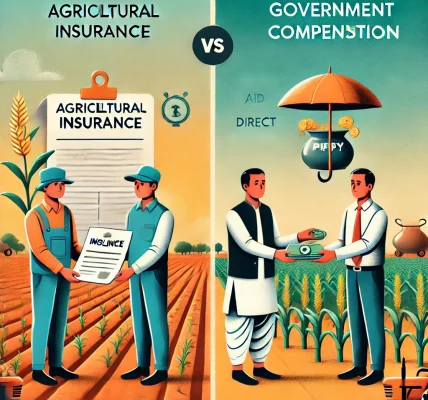Introduction
Agroforestry, the practice of integrating trees with crops and livestock, is gaining momentum as a sustainable farming solution. It enhances biodiversity, improves soil health, conserves water, and provides additional income to farmers. Recognizing its benefits, the Government of India has launched various schemes and financial aid programs to support farmers in adopting agroforestry and tree plantation.
In this article, we will explore what agroforestry is, why it is important, key government schemes, and how farmers can avail financial assistance for tree plantation and agroforestry development.
What is Agroforestry?
Agroforestry is a land-use management system where trees, crops, and livestock coexist to enhance ecological and economic sustainability. It combines agriculture and forestry practices to increase land productivity while promoting environmental conservation.
Benefits of Agroforestry:
✅ Soil Conservation: Trees prevent soil erosion and enhance soil fertility. ✅ Water Conservation: Reduces water runoff and promotes groundwater recharge. ✅ Biodiversity Enhancement: Provides habitat for wildlife and promotes ecosystem balance. ✅ Additional Income Source: Farmers can earn through timber, fruit, medicinal plants, and fodder production. ✅ Climate Resilience: Helps in carbon sequestration and mitigates climate change effects.
Government Schemes Supporting Agroforestry and Tree Plantation
1. Sub-Mission on Agroforestry (SMAF)
- Objective: Promote agroforestry as a sustainable farming practice.
- Key Benefits:
- Financial assistance for nursery establishment and tree planting.
- Subsidies up to 50% on the cost of tree plantation.
- Support for capacity building and training programs.
- Eligibility: Farmers, FPOs, and rural communities.
- How to Apply?
- Applications can be submitted through State Agriculture Departments.
2. National Afforestation Programme (NAP)
- Objective: Promote tree plantation on degraded lands.
- Key Benefits:
- Funding for afforestation and eco-restoration projects.
- Financial assistance for community-led agroforestry initiatives.
- Eligibility: Farmers, Joint Forest Management Committees (JFMCs), and NGOs.
- How to Apply?
- Applications can be submitted through Forest Development Agencies (FDAs).
3. Green India Mission (GIM)
- Objective: Enhance forest cover and biodiversity.
- Key Benefits:
- Financial support for tree plantation and forest restoration.
- Funding for climate-resilient agroforestry projects.
- Eligibility: Individual farmers, FPOs, and community organizations.
- How to Apply?
- Applications are submitted through State Forest Departments.
4. National Agroforestry Policy (NAP) Initiative
- Objective: Promote the large-scale adoption of agroforestry.
- Key Benefits:
- Financial incentives for farmers transitioning to agroforestry.
- Support for research and development in agroforestry techniques.
- Eligibility: Farmers, agricultural research institutions, and FPOs.
- How to Apply?
- Applications can be made through Krishi Vigyan Kendras (KVKs).
5. Mahatma Gandhi National Rural Employment Guarantee Act (MGNREGA)
- Objective: Provide rural employment through ecological conservation projects.
- Key Benefits:
- Wage support for farmers engaging in afforestation.
- Financial assistance for land development and soil conservation.
- Eligibility: Rural farmers and landowners.
- How to Apply?
- Register through the Gram Panchayat office.
6. Rashtriya Krishi Vikas Yojana (RKVY-RAFTAAR)
- Objective: Provide funding for innovative agroforestry projects.
- Key Benefits:
- Grants and subsidies for tree-based farming.
- Support for agroforestry research and training programs.
- Eligibility: Individual farmers, agripreneurs, and research institutions.
- How to Apply?
- Applications can be made through State Agricultural Departments.
How to Apply for Agroforestry Financial Aid?
Step 1: Identify the Suitable Scheme
- Choose the most relevant government scheme based on your location and farming needs.
- Check the eligibility criteria and funding benefits.
Step 2: Prepare Required Documents
- Aadhaar Card / Farmer ID
- Land Ownership Proof / Lease Agreement
- Bank Account Details
- Agroforestry Plantation Plan
Step 3: Submit the Application
- Apply through the respective government portals (MoEFCC, NABARD, State Agriculture Department, etc.).
- Farmers can also apply through Krishi Vigyan Kendras (KVKs) or Gram Panchayats.
Step 4: Approval and Fund Utilization
- Once approved, financial aid is directly transferred to the farmer’s account.
- Farmers can then implement tree plantation as per scheme guidelines.
Challenges in Adopting Agroforestry and Solutions
🚧 Long Gestation Period: Tree crops take time to mature, but intercropping with fast-growing species can generate income in the short term. 🚧 Market Uncertainty: Forming Farmer Producer Organizations (FPOs) can help farmers secure better prices. 🚧 Lack of Awareness: Enrolling in government-supported agroforestry training programs can help farmers gain expertise. 🚧 Land Ownership Issues: Tenant farmers can explore community-based agroforestry models.
Future of Agroforestry in India
With increasing emphasis on sustainability and climate resilience, agroforestry is expected to play a vital role in India’s agricultural sector. Government support, financial incentives, and rising market demand for tree-based products will encourage more farmers to adopt agroforestry.
By leveraging government schemes, farmers can achieve long-term economic and environmental benefits while contributing to a greener future. 🌳🌾🌍




